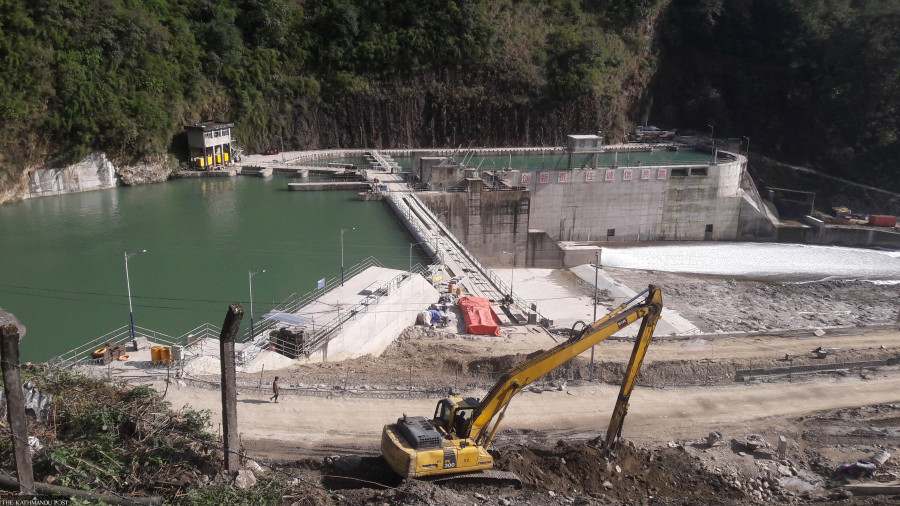
The Ministry of Forest and Environment has cleared the Environment Impact Assessment Report for the proposed 160-billion-rupee, 683-megawatt Sunkoshi 3 hydropower project, paving the way for bilateral negotiations between Nepal and Bangladesh to develop the project.
The two countries have agreed to develop the project through a joint venture investment as per the agreement reached between the two sides during the fourth meeting of the working group and joint steering committee held in late August.
As per the press statement issued by the Ministry of Energy, Water Resources and Irrigation on August 25, the two sides agreed that Nepal would send the Environment Impact Assessment (EIA) report to Bangladesh, as early as possible, on which the Bangladeshi side would give its opinion at the earliest, while taking ahead the process of establishing a joint venture company.
Officials at the energy ministry confirmed that the EIA report has got approval from the Ministry of Forest and Environment.
“We have received the letter from the environment ministry about the approval given to the EIA report on the development of Sunkoshi 3,” said Chiranjeewee Chataut, director general at the Department of Electricity Development. The EIA was under the environment ministry’s consideration since April this year.
Officials said the government would share the report with Bangladesh as agreed in August.
“Once we share the report with the Bangladeshi side, they will review it, seek needed clarifications and a joint technical team is then expected to visit the project site,” said Madhu Bhetuwal, spokesperson at the energy ministry. “After that, the two sides are expected to sign a Memorandum of Understanding on project development, paving the way for joining project development.”
Though the two sides have agreed to develop the project through a joint venture company, it is unclear which agencies would be involved in the project which will be built at the border between Ramechhap and Kavrepalanchowk districts.
Officials said Nepal’s obvious choice for the joint venture is the Nepal Electricity Authority (NEA), the state-owned power utility.
The NEA has also been eager to be a partner in the project. “There has been an initial talk about handing out the construction licence to Nepal Electricity Authority, but no official decision has been made,” said the NEA Managing Director Kul Man Ghising. “If we get the licence, we can hand it over to the new joint venture company, provided a joint venture agreement is reached between the NEA and a Bangladeshi entity.”
Power-hungry Bangladesh has been eager to develop hydropower projects in Nepal and buy electricity from the country.
In the August meeting, Nepal and Bangladesh had decided to request India to provide passage for the export of 40-50 MW of electricity from Nepal to Bangladesh in the initial phase, utilising the high voltage direct current power systems located in Bheramara of Bangladesh.
For this, they agreed to ask for a trilateral energy sales and purchase agreement among the NEA, Bangladesh Power Development Board, and India’s NTPC Vidyut Vyapar Nigam (NVVN) on utilising the Baharampur-Bheramara cross-border power transmission link.
In 2013, India and Bangladesh inaugurated the Baharampur-Bheramara cross-border power transmission link between the countries that would initially facilitate the export of 500 MW of electricity.
In fact, the NEA said it had sent a request to NVVN in late August as per the agreement reached between Nepal and Bangladesh. “We are yet to get a response from the Indian company,” said Ghising.
As per the Joint Vision Statement on Power Sector Cooperation issued in early April during the state visit of Prime Minister Sher Bahadur Deuba to India, the two countries aim to expand cooperation in the power sector and include partner countries under Bangladesh, Bhutan, India, and Nepal (BBIN) framework. “India’s cooperation will be crucial to realise the dream of power trade between Nepal and Bangladesh,” said Bhetuwal.












